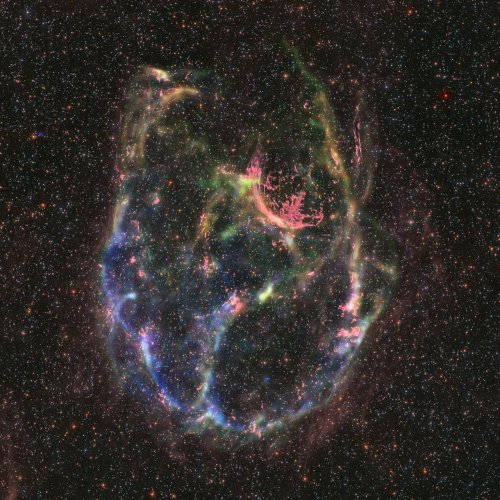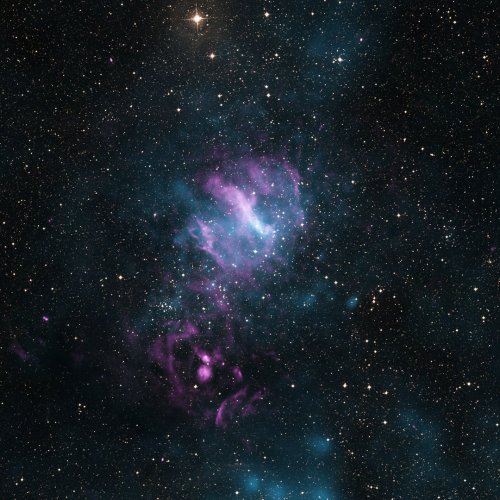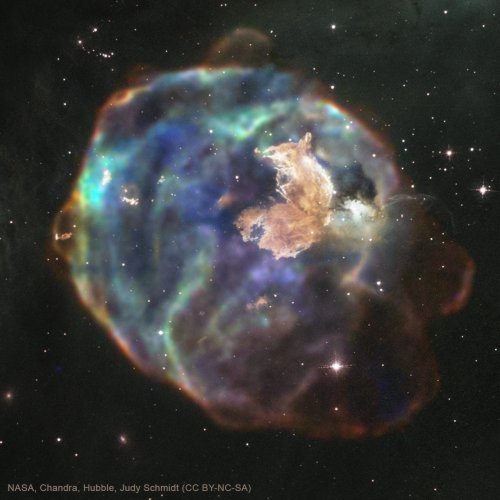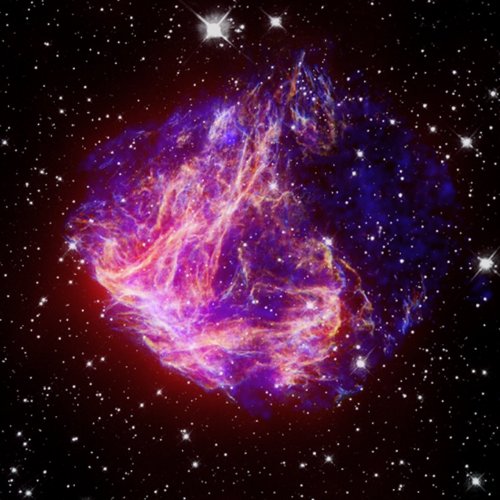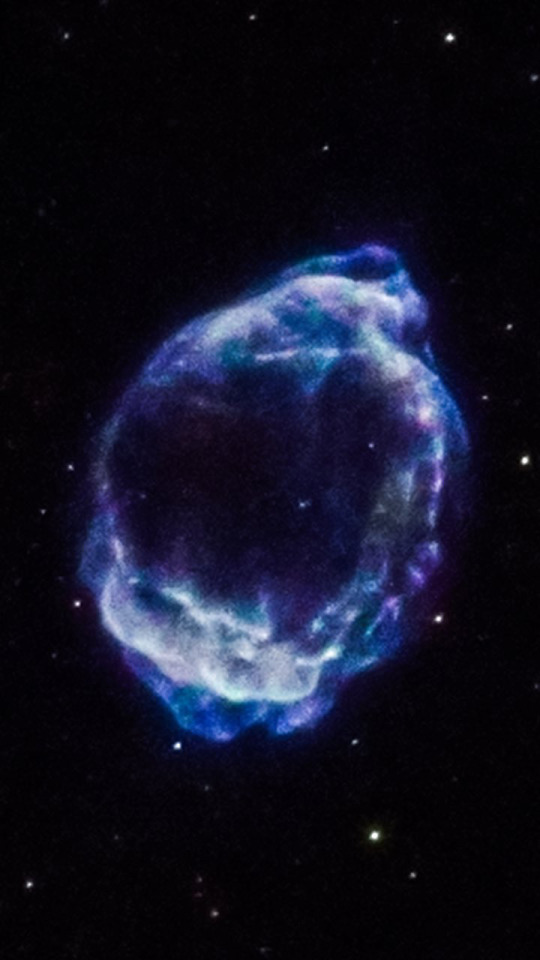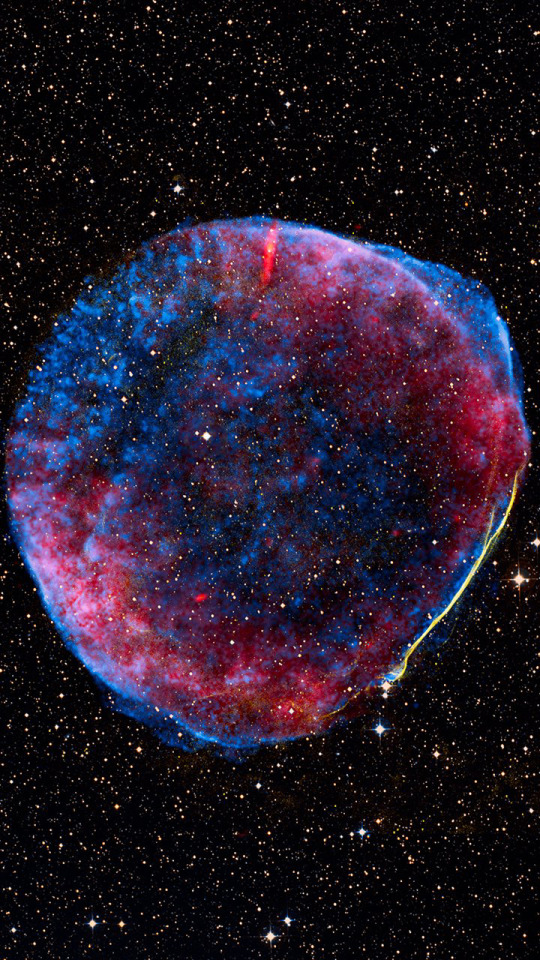Egg Nebula

Egg Nebula
also known as RAFGL 2688 and CRL 2688, the Egg Nebula is located 3000 light years from Earth in the constellation of Cygnus.
The nebula is a bi-polar proto-planetary nebula, or essentially a star in the dying days of it's existence starting to throw out shells of atmosphere as it moves towards being a white dwarf.
The central star is concealed by an area of dust with the light poking out in areas where the dust is lightest, this is thought to be an accretion disk around the star.

More Posts from Donutdomain and Others
An interesting fact I just learned about amethyst! It is a light-sensitive crystal, so if you keep it in direct light, the color can fade. So if you want to preserve the pigment of your amethyst, make sure to keep it out of direct lighting ☀️💜

Stars and Dust Across Corona Australis : Cosmic dust clouds cross a rich field of stars in this telescopic vista near the northern boundary of Corona Australis, the Southern Crown. Less than 500 light-years away the dust clouds effectively block light from more distant background stars in the Milky Way. Top to bottom the frame spans about 2 degrees or over 15 light-years at the clouds’ estimated distance. At top right is a group of lovely reflection nebulae cataloged as NGC 6726, 6727, 6729, and IC 4812. A characteristic blue color is produced as light from hot stars is reflected by the cosmic dust. The dust also obscures from view stars in the region still in the process of formation. Just above the bluish reflection nebulae a smaller NGC 6729 surrounds young variable star R Coronae Australis. To its right are telltale reddish arcs and loops identified as Herbig Haro objects associated with energetic newborn stars. Magnificent globular star cluster NGC 6723 is at bottom left in the frame. Though NGC 6723 appears to be part of the group, its ancient stars actually lie nearly 30,000 light-years away, far beyond the young stars of the Corona Australis dust clouds. via NASA

i learned that the Sun is 99.86% of all mass in our solar system. Every other planet, asteroid, and comet only adds up to 7/50th of a single percent (x)

IC 342: Hidden Galaxy
"IC 342 is a challenging cosmic target. Although it is bright, the galaxy sits near the equator of the Milky Way’s galactic disk, where the sky is thick with glowing cosmic gas, bright stars, and dark, obscuring dust. In order for astronomers to see the intricate spiral structure of IC 342, they must gaze through a large amount of material contained within our own galaxy — no easy feat! As a result IC 342 is relatively difficult to spot and image, giving rise to its intriguing nickname: the “Hidden Galaxy.” Located very close (in astronomical terms) to the Milky Way, this sweeping spiral galaxy would be among the brightest in the sky were it not for its dust-obscured location. The galaxy is very active, as indicated by the range of colors visible in this NASA/ESA Hubble Space Telescope image, depicting the very central region of the galaxy. A beautiful mixture of hot, blue star-forming regions, redder, cooler regions of gas, and dark lanes of opaque dust can be seen, all swirling together around a bright core. In 2003, astronomers confirmed this core to be a specific type of central region known as an HII nucleus — a name that indicates the presence of ionized hydrogen — that is likely to be creating many hot new stars."
Image and information from NASA.
![[ Download Link ]](https://64.media.tumblr.com/5f429d178bb1fe4870a8c6931415c38e/1c195b3b919b6bc0-22/s500x750/9f3e89788ae15eab900a39fc63f99bd7a543868d.jpg)
![[ Download Link ]](https://64.media.tumblr.com/6dd33d9a47c84fae4004c3891a069032/1c195b3b919b6bc0-70/s500x750/7a350518ca98cd34cd6e5fa9cd463fb933dbcf11.jpg)
![[ Download Link ]](https://64.media.tumblr.com/c6bcee52d8e78ba0e31e786b91f81fc1/1c195b3b919b6bc0-03/s500x750/735d52cfd62421cf43e46a8a710f76dad2c52707.jpg)
![[ Download Link ]](https://64.media.tumblr.com/87c3f0ff1da8e8a917485898808bd63b/1c195b3b919b6bc0-64/s500x750/62e90c66492ac189a3325bbd25965dd635cc65b7.jpg)
![[ Download Link ]](https://64.media.tumblr.com/133564050990bca016611a68fa71a2de/1c195b3b919b6bc0-c1/s500x750/87ea85696f416c49b91f8f64754306f4208b6726.jpg)
![[ Download Link ]](https://64.media.tumblr.com/9a2582c5d3abc3f5cf6ce4587482f493/1c195b3b919b6bc0-c5/s500x750/19c8f03ee111f028acd365ae95b24a04a72e60d9.png)
[ Download Link ]
As promised, it’s finally here! Thank you to all of my patrons for not only the support that made this possible, but for giving me the confidence to work on a big project like this.
Rather than providing any drawing instruction, what this writeup aims to do is help you learn to unpack the decisions being made in a given composition, and articulate what elements in a piece are responsible for its impact. Being able to isolate these qualities in your own art and art that inspires you opens up avenues for improvement regardless of medium, style, or technical skill. This is the first of hopefully many PWYW art ‘tutorials’ from me.
I hope you all enjoy!
-
 flexyhexy liked this · 1 year ago
flexyhexy liked this · 1 year ago -
 pixieokapi reblogged this · 1 year ago
pixieokapi reblogged this · 1 year ago -
 drvista liked this · 2 years ago
drvista liked this · 2 years ago -
 the-marathon-continues-nip reblogged this · 2 years ago
the-marathon-continues-nip reblogged this · 2 years ago -
 rosebella2016 liked this · 2 years ago
rosebella2016 liked this · 2 years ago -
 deathstalkerspride reblogged this · 2 years ago
deathstalkerspride reblogged this · 2 years ago -
 monroeurfnboat reblogged this · 2 years ago
monroeurfnboat reblogged this · 2 years ago -
 beansofm liked this · 2 years ago
beansofm liked this · 2 years ago -
 ginpotts liked this · 2 years ago
ginpotts liked this · 2 years ago -
 iamreadyforunow reblogged this · 2 years ago
iamreadyforunow reblogged this · 2 years ago -
 iamreadyforunow liked this · 2 years ago
iamreadyforunow liked this · 2 years ago -
 stickymoonsoul reblogged this · 2 years ago
stickymoonsoul reblogged this · 2 years ago -
 phantomregretbyprachi liked this · 2 years ago
phantomregretbyprachi liked this · 2 years ago -
 the-marathon-continues-nip liked this · 2 years ago
the-marathon-continues-nip liked this · 2 years ago -
 becomingporsche liked this · 2 years ago
becomingporsche liked this · 2 years ago -
 mangacat201 reblogged this · 2 years ago
mangacat201 reblogged this · 2 years ago -
 smittenskitten reblogged this · 2 years ago
smittenskitten reblogged this · 2 years ago -
 david-watts reblogged this · 2 years ago
david-watts reblogged this · 2 years ago -
 officialsadomasochist liked this · 2 years ago
officialsadomasochist liked this · 2 years ago -
 penisbanger liked this · 2 years ago
penisbanger liked this · 2 years ago -
 enomaru-k liked this · 2 years ago
enomaru-k liked this · 2 years ago -
 cyraniadebergerac reblogged this · 2 years ago
cyraniadebergerac reblogged this · 2 years ago -
 cyraniadebergerac liked this · 2 years ago
cyraniadebergerac liked this · 2 years ago -
 beekerosene liked this · 2 years ago
beekerosene liked this · 2 years ago -
 soymickeygonzales liked this · 2 years ago
soymickeygonzales liked this · 2 years ago -
 hherosoup liked this · 2 years ago
hherosoup liked this · 2 years ago -
 planetlessmoon liked this · 2 years ago
planetlessmoon liked this · 2 years ago -
 c4eva liked this · 2 years ago
c4eva liked this · 2 years ago -
 ally-pz liked this · 2 years ago
ally-pz liked this · 2 years ago -
 donutdomain reblogged this · 3 years ago
donutdomain reblogged this · 3 years ago -
 fairydonut549 liked this · 3 years ago
fairydonut549 liked this · 3 years ago -
 angelgreko liked this · 3 years ago
angelgreko liked this · 3 years ago -
 geekate liked this · 3 years ago
geekate liked this · 3 years ago -
 generallyconfusedlikeallthetime liked this · 3 years ago
generallyconfusedlikeallthetime liked this · 3 years ago -
 durinsbride liked this · 3 years ago
durinsbride liked this · 3 years ago -
 localenemystandouser liked this · 3 years ago
localenemystandouser liked this · 3 years ago -
 marshed-moosh reblogged this · 3 years ago
marshed-moosh reblogged this · 3 years ago -
 marshed-moosh liked this · 3 years ago
marshed-moosh liked this · 3 years ago -
 massimo313 liked this · 3 years ago
massimo313 liked this · 3 years ago -
 gaiawatcher liked this · 3 years ago
gaiawatcher liked this · 3 years ago -
 chehonteantosha liked this · 3 years ago
chehonteantosha liked this · 3 years ago -
 deathbychamomille liked this · 3 years ago
deathbychamomille liked this · 3 years ago -
 virace liked this · 3 years ago
virace liked this · 3 years ago -
 annarose-724 liked this · 3 years ago
annarose-724 liked this · 3 years ago

I just reblog fun facts/tipsScience, nature, geology facts etc! + art & writing tips!
67 posts




